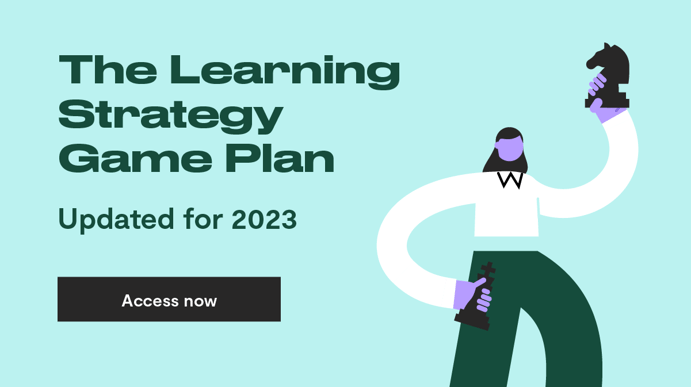The top 6 tips for embedding learning in your organisation
Gone are the days where you have to own a full set of encyclopedia and put aside a couple of hours to find the right volume, page and paragraph. Even though the method might have changed, learning still forms an integral part of modern society, just ask Siri or Google.
Learning is at our fingertips and people are hungry to learn. In a time when information is everywhere what we learn and how we learn becomes increasingly important.
At Inspire Group we are very lucky to have our own real-life Siris and Googles, aka Dan Tohill, Nic Veltman and Aidan Stoate, with decades of combined experience in the L&D industry. We reached out to them to ask them about top tips on how you can embed learning in your organisation.
1. It starts with onboarding
Setting the scene to encourage and promote a culture of learning, as part of the onboarding process is crucial. This will set the expectation that learning is supported and encouraged without being deliberate about it being applied. We want learning to be embedded, not forced.
Some examples of this could be to add a reflection activity as part of your onboarding offering and provide time for the new recruit to think about where they see themselves now, what they think their new role entails, possible challenges they can identify and how they see themselves growing in their new role.
Another example we’ve used in onboarding experiences we’ve designed, is to have a ‘treasure hunt’ where employees have to locate different documents on the intranet or schedule one-on-one meetings with various people using the organisation’s communication software. Through this they get to know the way things are done in the organisation and will very quickly know how to use these tools effectively.
CASE STUDY: Innovating the Onboarding Process for Chorus
The possibilities are endless! What’s most important is that learning links to their day-to-day activities and provides value to them. Ask yourself this question, “What do I want my employee to do in their role?”, then find learning activities that can achieve those objectives.
2. Set the example
As a leader, you need to set an example for your team. Being open to learning new things to improve your own practice and to support your team more effectively will go a long way in demonstrating a culture of learning in your organisation.
How you talk about your organisation, should align with the organisation's values.
The organisational story must match the internal practices.
At Inspire Group we share our learning with each other in the form of podcasts that are available both internally and externally and have regular catch-up and riff-sessions.
Think about your current learning culture and whether that links to your organisational values?
If not, how can you change that?
Next up, think about who is driving the advocacy for learning in your organisation?
Try to avoid working in silo.
Are you and other leaders playing a part in this process or does it solely rely on a group of people from your L&D or Comms department?
Alignment and integration are key not only in terms of everyone being on board, but also in terms of integration with existing processes.
3. Communicate your purpose
People connect through a shared purpose.
If you’re able to communicate that purpose and give the employees the big-picture view of where you are heading as an organisation, they will be able to create their own connection to this to determine where they fit it and what value they can add.
An IT technician may not see the link to the big picture and may therefore not feel inspired to learn and improve their skills. If they knew that the bigger organisational purpose is to help more New Zealanders become financially independent and be able to afford a property, they might think very differently about their day-to-day role at work.
Now their role of making sure that people within the organisation can communicate effectively and securely becomes a whole lot more important.
Knowing what your personal goal is and how it fits in with the organisational purpose, will build a culture of self-driven learning and a personalised learning experience.
For us at Inspire our shared purpose is that ‘better learning is life-changing’. Every single person and role in our organisation is needed for us to achieve this goal.
How will we know we are achieving this if we do not evaluate and seek feedback from the learners and clients we design for?
4. Integrate learning into the work day
We tend to think about learning in the traditional sense of a set amount of time being allocated to professional development training and courses.
Learning takes place in many shapes and forms throughout a workday. Allow time and opportunity for employees to collaborate with their peers on projects, have one-on-one meetings with their people leader or explore what’s new in their field.
Learning shouldn’t be prescriptive.
Leaders and managers taking the time to engage with employees to find out where they’re at in terms of their learning journey, where they want to be and what’s preventing them from getting there, is gold.
Having opportunities for reflection, has great benefit and value; it can serve as a coaching opportunity for leaders to embed or prevent behaviours.
For learning to happen there needs to be a stretch from what the learner knows already and for them to be taken outside their comfort zone.
How many of these opportunities are available to your employees throughout their workday?
Is collaboration and coaching encouraged in your organisation?
Go back to the basics.
These opportunities don’t have to be costly and flash to be effective. They can be as simple as using platforms they are already familiar with or being able to reach out to their peers to brainstorm possible solutions to a work problem they’re faced with.
Learning should be accessible, just in time and easily digestible to be effective.
READ: 15 Tips to get your team hungry for learning
5. Make it relevant
Learning opportunities should be authentic and it should matter.
Don’t just offer training for the sake of training. Remember there’s no one-size-fits-all solution to a learning problem.
People have different goals and learn in different ways.
One person might want the opportunity to riff with others, whereas another might want to have the time and space to Google it on their own.
The only way to figure this out is to go directly to the learner and find out what their learning needs are. Draw up a set of learning objectives from that discussion and offer learning opportunities that can meet those objectives.
Learning that is enforced from corporates in their ivory towers without chatting to the learners will most probably be dismissed and will not be of any value. It should be a democratic process of finding out their needs.
Don’t be mysterious.
Be open about what you are aiming to achieve as an organisation and then chat about their role within this and what learning would be needed to achieve this collective goal.
If you offer training, make sure to incorporate scenarios and language that is believable, familiar and relevant. This will only be achieved through knowing your team well.
What’s also really important in the learning process is the application of knowledge, skills and attributes and the reflection of how effective it has been afterwards.
Aim to foster a culture where asking for feedback is welcomed and it becomes the norm. If employees are able to try, fail fast and carry on, learning becomes more real and employees will be motivated to keep on learning and growing.
6. Celebrate it!
Last but most importantly, celebrate learning!
This can be done in many ways and doesn’t need to be a themed party, with balloons and cake, even though that might be a fun way to go about it. At Inspire Group we have many different ways of celebrating learning.
Every Friday we have an event called ‘Highlights’, where we go around the room and every person mentions what has been their highlight of the week. It’s a good way to keep in tune with what is happening at the office in other teams and offers an opportunity for reflection and building an attitude of gratitude.
We also have monthly ‘show and tell’ opportunities for the different departments at Inpsire to reflect on projects they have done, what they liked about it and what they could improve on.
Other examples include project closes and retro events where we reflect on past projects and use the ’stop, start, continue‘ retrospective. We discuss what is no longer working (stop), what is working well (continue) and what new ideas or methods we could bring to the table the next time around (start).
Once again, the possibilities to celebrate are endless and will be unique to your organisation. Think about what opportunities currently exist, to celebrate learning and what you could incorporate in the future.
Learning is something that can sometimes be quite difficult and uncomfortable. Failure is an inevitability, but gives us a platform to adjust and enhance our approach to something. Learning is not about perfection, but actually about incremental growth, achieved through a continuous pattern of try, fail, optimise and succeed.
You have taken the first step by reading this article and are one step closer to successfully embedding learning in your organisation. The challenge now is to go out and put this knowledge into action. Your employees will thank you for it.
Check out this free module to help you lift your game!
About the author
I'm Frieda, lover dad jokes, fairy-tale endings and outdoor adventures with my family. For almost a decade I designed learning solutions for my Science and Biology high-school students. Now my audience includes a variety of learners from different skill levels and organisations. Since joining Inspire Group, every day has been a meaningful experience collaborating with the team and our clients to design learning that is life changing.






